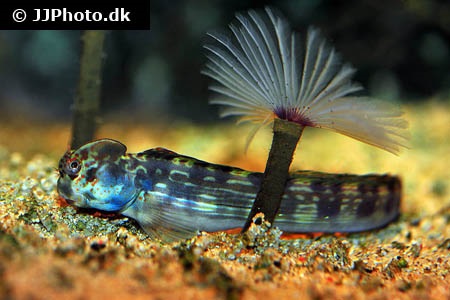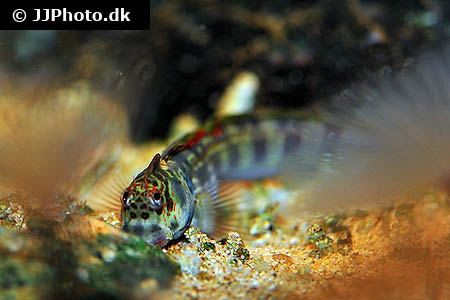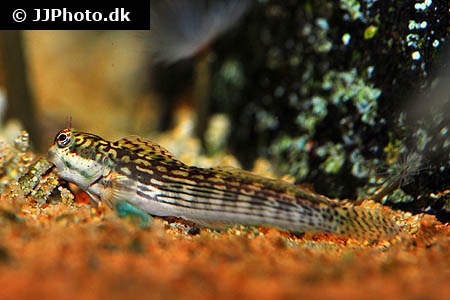Istiblennius lineatus
| Latin name | Istiblennius lineatus - (Valenciennes, 1836) |
|---|---|
| Local name | Lined rockskipper |
| Family | Blenniidae - Istiblennius |
| Origin | East Indian Ocean, West Indian Ocean, Australia, Japan, The Red Sea, Indonesia, East Pacific, Central/West Pacific |
| Max length | 15 cm (5.9") |
| Minimum volume |
400 l (106 gal) |
|---|---|
| Hardiness |
Hardy |
| Suitable for aquarium |
Suitable with care |
| Reef safe |
Often reef safe |
| Aggressiveness | Might be aggressive towards similar species |
| Recommended |
Microalgea (Eg. spirulina) |
|---|---|
| Mostly |
Macroalgea (Eg. seaweed / nori) |
This species is known to jump out of open aquaria.
There is little available knowledge of this species, so there can be important information missing on this page.
This species only eats algae from rocks and glass. There must therefore be enough algae growth so it can find its own food.
Some aquarists have trained it to accept dry foods, but it is not something one should count on.
These fish flourish better without other members of the same species in the aquarium.
This species can be found nibbling soft coral and LPS if there is insufficient food available.
These fish should be kept in a well run aquarium where they can "graze" algae from rocks and stones.
If there are insufficient algae on the rocks, it is important to feed more frequently and supplement with algae rich food e.g. Spirulina.
This species can eat large amounts of algae (relative to their size) from rocks, like green hair algae and filamentous algae.
As it doesn’t eat every algae type, in case of a specific algae plague, find out more precise information.
There are many differences within the Toothcomb Blennies family, some eat algae whilst others eat zooplankton. There are many families of Blennies, this is merely one of them.
What they have in common are their oblong shape and long dorsal fin. Some species have small "legs" used to move around the bottom.
These Blennies do not normally get very big and are therefore a good choice for both small and large aquaria. They are not often very colorful, but many have a fun personality which many aquarists fall for.
The species of the families Aspidontus and Plagiotremus imitate Cleaner Wrasses and can therefore be difficult to identify.
| Aquarium trade | Yes |
|---|---|
| Distribution | Indo-Pacific: Laccadive Islands and Maldives to Mangaréva, Gambier Islands. Western Central Pacific: Guam (Ref. 35721). |
| English common names |
Thin-lined rockskipper Lined blenny Black-lined blenny |
| Danish common names |
Hjælmslimfisk |
Jeff Kurtz. 2007. Combtooth Blennies: Bewitching Bottom Dwellers - Tropical Fish Hobbyist - (English)
Scott W. Michael. Reef Aquarium Fishes: 500+ Essential-to-know Species - TFH Publications / Microcosm Ltd. - (English)
Bob Fenner. The True/Combtooth Blennies, Family Blenniidae - Wet Web Media - (English)
Bob Fenner. Blennioids: Blennies and Blenny-Like Fishes - Wet Web Media - (English)




